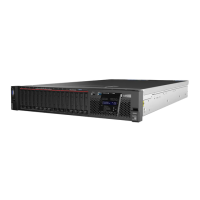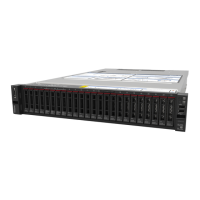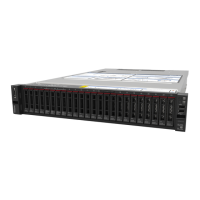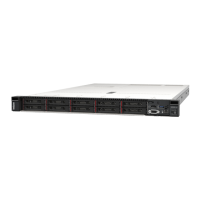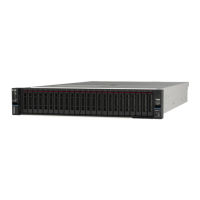Note 1: For power source redundancy, the power supplies in bays 1 and 3 must be fed from a different
power source than the power supplies in bays 2 and 4.
– “yes/no” means the system will remain operating if the power input to bays 2 and 4 fails.
– “no/yes” means the system will remain operating if the power input to bays 1 and 3 fails.
Before you install a power supply:
1. If the power supply bay contains a filler, pull the filler from the bay.
Complete the following steps to install a power supply:
Watch the procedure. A video of the installation process is available:
• Youtube:
https://www.youtube.com/playlist?list=PLYV5R7hVcs-DbSYJFY74PoKmph7vgrkKH&playnext=1
• Youku: http://list.youku.com/albumlist/show/id_50952215
Step 1. Install the power supply in the bay.
Figure 46. Power supply installation
Insert the power supply in its bay and press it in until the release tab locks.
After you have installed a power supply:
1. If the power supplies being installed are of a different wattage than the power supplies previously
installed in the chassis, cover the existing chassis power rating label with a new label of the same style
from the system power rating labels sheet that comes with the power supply option.
2. Route the power cable from the power supply to the power source and secure it.
The cable should pass through the cable hook-and-loop on the rear of the server so that it does not
accidentally become unplugged.
3. Connect the power cable to the power supply; then, connect it to the power source.
Install the server in a rack
To install the server in a rack, follow the instructions that are provided in the Rail Installation Kit for the rails
on which the server will be installed.
Cable the server
Attach all external cables to the server. Typically, you will need to connect the server to a power source, to
the data network, and to storage. In addition, you will need to connect the server to the management
network.
84
ThinkSystem SR950 Setup Guide
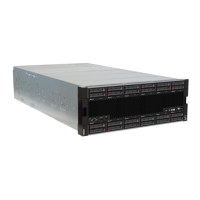
